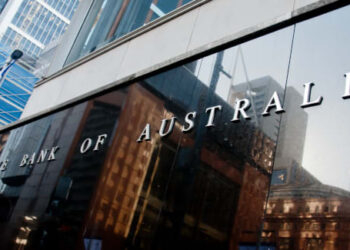The Reserve Bank of Australia (RBA) has released its latest assessment of financial stability risks, acknowledging increasing optimism about the prospect for a soft landing in the global economy.
The central bank referenced a number of developments – including the resolution of supply chain disruptions, declines in energy prices, continued strength in labour markets, strong household balance sheets, and solid corporate earnings – as having contributed to the economy’s resilience to date.
However, it warned that pressures from high inflation and tight monetary policy still weigh on many households and businesses.
“Although risks to the outlook for the global economy have become more balanced as inflation has eased, risks to global financial stability remain,” the RBA said, noting the risk of added pressure on domestic borrowers and on financial institutions’ balance sheets if these risks spill over to the Australian financial system.
Looking ahead, the Reserve Bank said four main headwinds stood out as having the potential to adversely affect financial stability in Australia.
Further stress in the Chinese property sector
The Reserve Bank said it fears further weakness in the Chinese property sector interacting with longstanding macro-financial vulnerabilities there.
Namely, property developers’ asset prices have remained at severely distressed levels despite authorities introducing additional measures to encourage banks to lend to the sector.
“If stresses in the Chinese economy and financial system intensified or broadened, they could spill over to the rest of the world (including Australia) through trade channels and an increase in global risk aversion,” the RBA stated.
While stress in China’s property sector has largely been contained so far, the central bank said the “key” channels of transmission of financial stress in China to Australia would likely be via a slowing in global economic activity, lower global commodity prices, and reduced Chinese demand for Australian goods and services.
Global CRE markets
The Reserve Bank also noted concern over the further deterioration of global commercial real estate (CRE) markets on the back of high interest rates and ongoing weak demand continuing to put pressure on borrowers.
CRE prices have fallen further from their peak and are now down 10–25 per cent in Europe and the US. With further vacancy rate increases and drops in landlord income, offices have been the most affected.
Some CRE borrowers – particularly those who own older or lower quality office buildings – are facing growing debt-servicing difficulties, according to the RBA, with US bank loan quality for non-residential and multi-family buildings deteriorating again at the end of last year.
Moreover, European banks’ CRE non-performing loans increased over the second half of 2023 but remain very low relative to history. As such, the central bank referenced the recent collapse of private Austrian-owned real estate firm Signa Holding to highlight the ongoing challenge for highly leveraged real estate firms.
“While the direct risks are largest in those international banking systems highly exposed to CRE lending, conditions in Australian CRE markets could be affected by the repatriation of foreign investment, following a decade or so where foreign investment in Australian CRE increased notably,” the RBA said.
Disruption to global asset prices
The RBA highlighted that worse-than-expected macroeconomic outcomes, coupled with fragilities in market functioning, could result in a disorderly adjustment in financial asset prices.
Particularly as market participants are increasingly optimistic for a soft landing in the global economy, it said that financial markets could be vulnerable to an “adverse shock”.
“Possible triggers for an abrupt repricing in market risk premia include global inflation proving more persistent than expected or a severe adverse geopolitical event,” the Reserve Bank explained.
“In the event of a shock, which could originate from outside the global financial system (e.g. from geopolitical tensions) or within the global financial system (e.g. from China, deteriorating CRE markets or inflation staying higher for longer), markets could rapidly reprice.”
Disruptions to the functioning of global financial markets, it added, could be amplified by shortcomings in the management of leverage and liquidity mismatches, including by non-bank financial intermediaries (NBFIs) in key financial centres as seen on several occasions in recent years.
Cyber and climate change remain key risks
Threats originating outside the global and domestic financial system – including cyber attacks, risks associated with climate change and geopolitical tensions – were identified by the Reserve Bank as having the potential to adversely affect financial stability in Australia.
Noting that the adoption of new technologies has brought many benefits, the body pointed out that it simultaneously poses risk.
“These risks are magnified in an environment of escalating cyber threats, geopolitical tensions and increasing use of third-party providers,” it said.
“Good governance and risk management by financial institutions is critical to maintaining operational resilience in this environment.”
As such, the RBA said that financial institutions’ operational resilience is “critical” to the overall resilience of the Australian financial system and flagged it as a regulatory priority.







